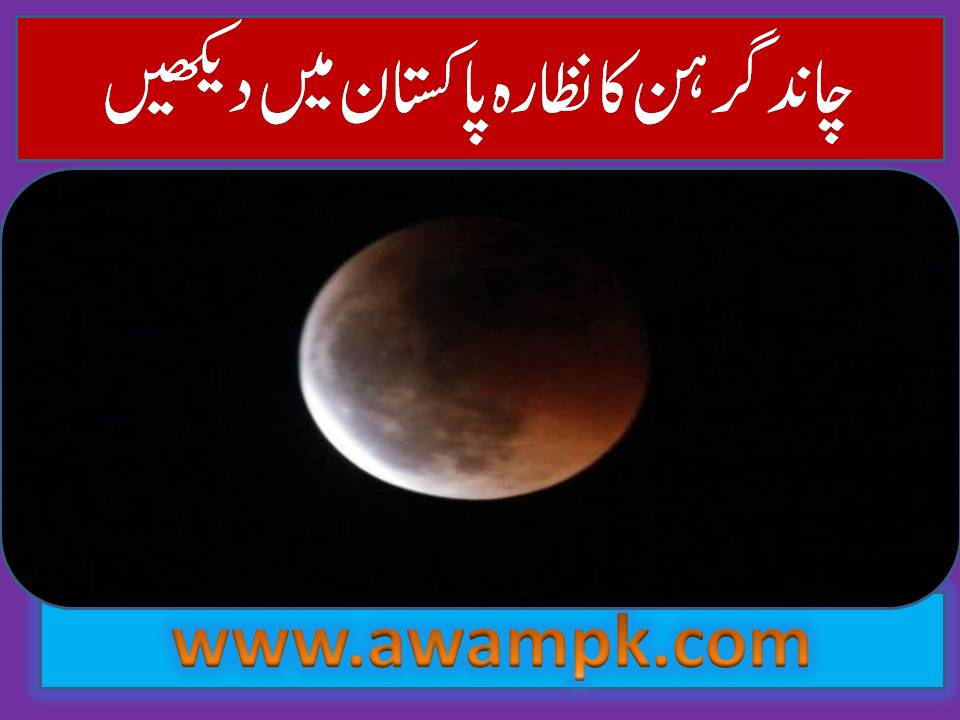The lunar eclipse March 2024 will be observed on March 25, 2024. According to astronomers, the lunar eclipse will be for five hours in Saudi Arabia and can be seen in all cities there. Lunar eclipse 2024 in Pakistan, 2nd and last lunar eclipse of this year was also seen in Pakistan. March grahan 2024 in Pakistan date and time, the lunar eclipse will begin on October 28 at 11:01 PM according to Pakistan Standard Time.
The first lunar eclipse of this year will be tomorrow which will not be visible in Pakistan. The lunar eclipse will begin tomorrow (March 25) at 9:00 a.m. Pakistan time, peaking at 12:12 p.m. and ending at 2:32 p.m., for a total duration of 4 hours and 40 minutes.
Lunar Eclipse March 2024 in Pakistan Timing
The lunar eclipse will be visible in Africa, Europe, Australia and North and East Asia, but the people of Pakistan and India will not be able to see it.
25 March 2024 grahan time in Pakistan in English
The second and last lunar eclipse of this year will be on October 28, which can also be seen in Pakistan. When the moon is passing through the darkest part of the earth’s shadow and comes between the earth, the sun and the moon, on this occasion. When the sunlight passes through the earth’s atmosphere, the red light is bent more than the blue light and therefore the moon appears red during the eclipse. According to the Pakistan Standard Time, the lunar eclipse will take place on October 28 at 11 pm. It will start at 01:00 AM and peak at 01:15 AM.
The lunar eclipse in Saudi Arabia
The lunar eclipse will last for 4 hours and 17 minutes. The eclipse will begin at 06:14 p.m. on Friday, peak at 08:24 p.m. and end at 10:31 p.m. This is one of those types of eclipse during which the Earth’s shadow does not fall on the Moon, but some of the Sun’s light does not illuminate the surface of the Moon, making the Moon 10% less bright than usual. The lunar_eclipse will be visible in most parts of Asia, including Pakistan, Europe, Australia, Africa, South America, and other countries. when is the next lunar eclipse?
what is the lunar eclipse?
what is a lunar eclipse During the rotation of the sun, our planet (Earth) comes between the moon and the sun in such a way that the moon is obscured by the shadow of the earth. This is possible only when the sun, earth, and moon are in their own orbits.
When the earth comes between the moon and the sun when it is the day of the full moon, its shadow falls on the moon, causing the light of the moon to turn into darkness. when we stand on the ground and look at the moon, it seems dim and black to us and that is why it is called a lunar eclipse.why does the moon turn red during a lunar eclipse.
Partial lunar eclipse will be visible in Pakistan, total lunar eclipse will be visible in parts of Asia and Australia. A total lunar eclipse will be observed in most parts of North America, South America, and a total lunar eclipse will be observed in most parts of Northern and Eastern Europe.
How to View the Lunar Eclipse of 25th March 2024
The lunar eclipse of 25th March 2024 can be viewed with the naked eye, and no special equipment is needed. However, for the best viewing experience, it is recommended to use a telescope or binoculars. The eclipse will be visible in many parts of the world, but the best viewing will be in areas with clear skies and minimal light pollution.
Lunar eclipses are important for several reasons. Firstly, they are a rare astronomical event that allows us to witness the beauty of the universe. Secondly, they are an excellent opportunity for scientists to study the moon and its surface. During a lunar eclipse, the moon’s surface is bathed in a reddish hue, making it easier for scientists to observe and study its features. Finally, lunar eclipses have cultural and religious significance in many parts of the world. The end of the lunar eclipse will be on October 29 at 03:36 PM. The lunar eclipse can be seen in various countries including Pakistan as well as Asia, Russia, Europe and Africa.
 AWAM PK – Current Jobs & News for Awam of Pakistan AWAM PK Latest News, Results, Jobs, Sports, images, All Prices in Pakistan
AWAM PK – Current Jobs & News for Awam of Pakistan AWAM PK Latest News, Results, Jobs, Sports, images, All Prices in Pakistan



